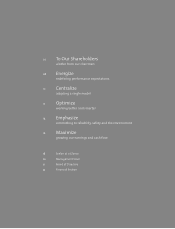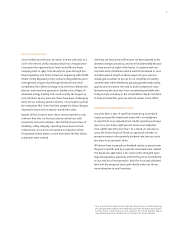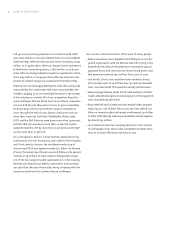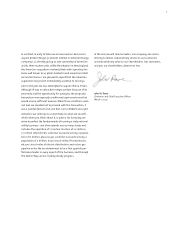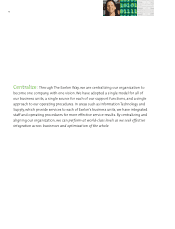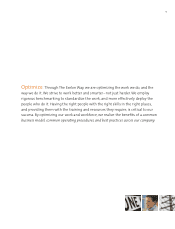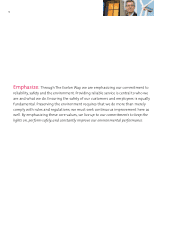ComEd 2003 Annual Report Download - page 6
Download and view the complete annual report
Please find page 6 of the 2003 ComEd annual report below. You can navigate through the pages in the report by either clicking on the pages listed below, or by using the keyword search tool below to find specific information within the annual report.
4Letter to Shareholders
Full year 2003 earnings prepared in accordance with GAAP
were $905 million,or $2.75 per diluted share.Our consolidated
GAAP earnings reflect several unusual events,including a $573
million, or $1.74 per share, after-tax charge for the impairment
of the Boston Generating assets; a $180 million, or $0.55 per
share,after-tax charge related to Exelon’s investment in Sithe;
and a $159 million, or $0.49 per share, after-tax severance and
severance-related charge associated with The Exelon Way.
While we are most disappointed by the write-offs,and accept
responsibility for investments that have not succeeded, the
market is judging us on our overall performance in the context
of the industry as a whole. All of our competitors faced the
same challenges that we faced, and many of these companies
are now half the size they were in 2000, or gone completely.
From the date of the Unicom/PECO merger in October of
2000 through the end of 2003,Exelon’s stock price was up
more than 11 percent. Both the Philadelphia Utility Index
(UTY) and the S&P Electrics were down more than 15 percent,
and the S&P 500 was down more than 20 percent. Exelon
outperformed the UTY by more than 25 percent and the S&P
500 by more than 30 percent.
As a consequence,Exelon’s overall market capitalization has
continued to rise over the past six years.When Oliver Kingsley
and I first came to Unicom, the combined market cap of
Unicom and PECO was approximately $12.1 billion. At the end
of 2003, the market cap of Exelon was $21.8 billion, an 80 percent
increase or $9.7 billion of value creation.Today, Exelon enjoys
one of the two largest market capitalizations in the industry.
We have also reduced our debt-to-capital ratio and increased
our cash flow.We are a financially strong company with the
resources and the will to confront future challenges.
Our success is the culmination of the work of many people.
– Exelon Generation has completed its first full year as an inte-
grated organization with Ian McLean and John Young in key
leadership roles. Annual net generation increased to 142,000
gigawatt-hours,and revenues net of purchased power and
fuel expense increased $410 million from 2002 to 2003.
– Jack Skolds,Chris Crane and their team worked to bring
all-in nuclear costs to an all time low,1.97 cents per kilowatt-
hour, consistent with first quartile industry performance.
– Exelon Energy Delivery, under Frank Clark and Denis O’Brien,
made substantial progress in reducing layers of management
and consolidating operations.
– Barry Mitchell and his treasury team made further progress
reducing our cost of debt. Since 2000,we have retired $1.9
billion in transition debt and retired or refinanced $5.0 billion
of other debt, thereby reducing annualized interest expense
by about $219 million.
– In our Business Services Company, Ruth Ann Gillis and her
IT and Supply Chain teams have completed multiple initia-
tives to increase efficiency and reduce costs.



